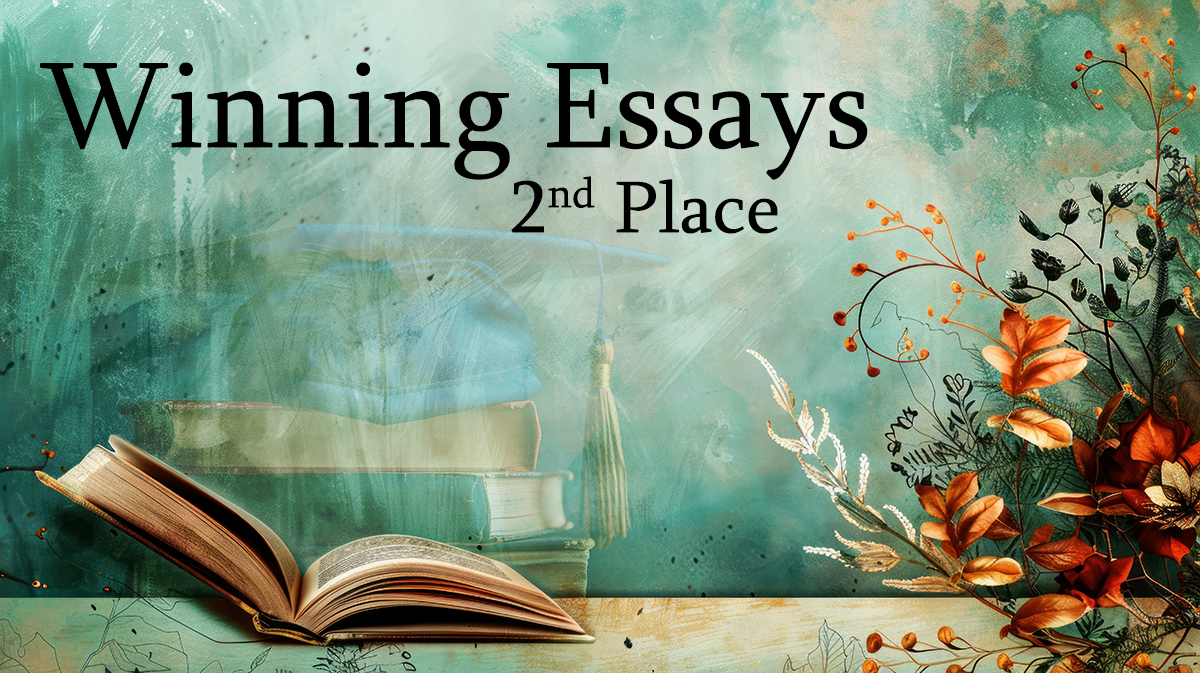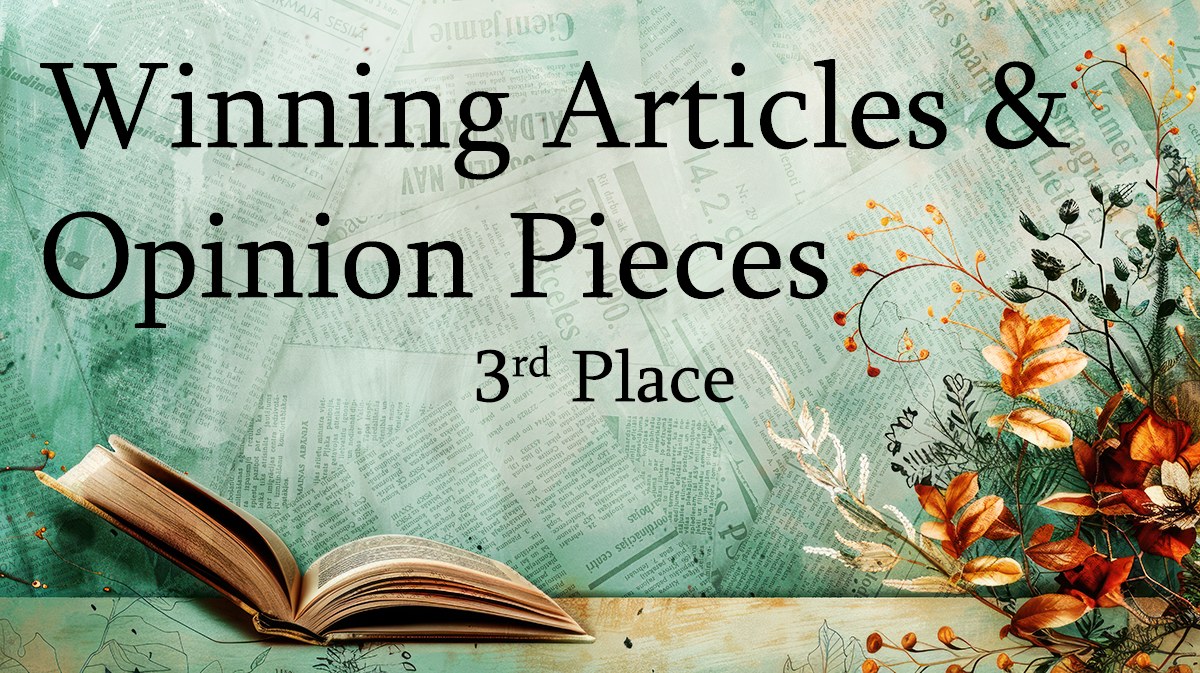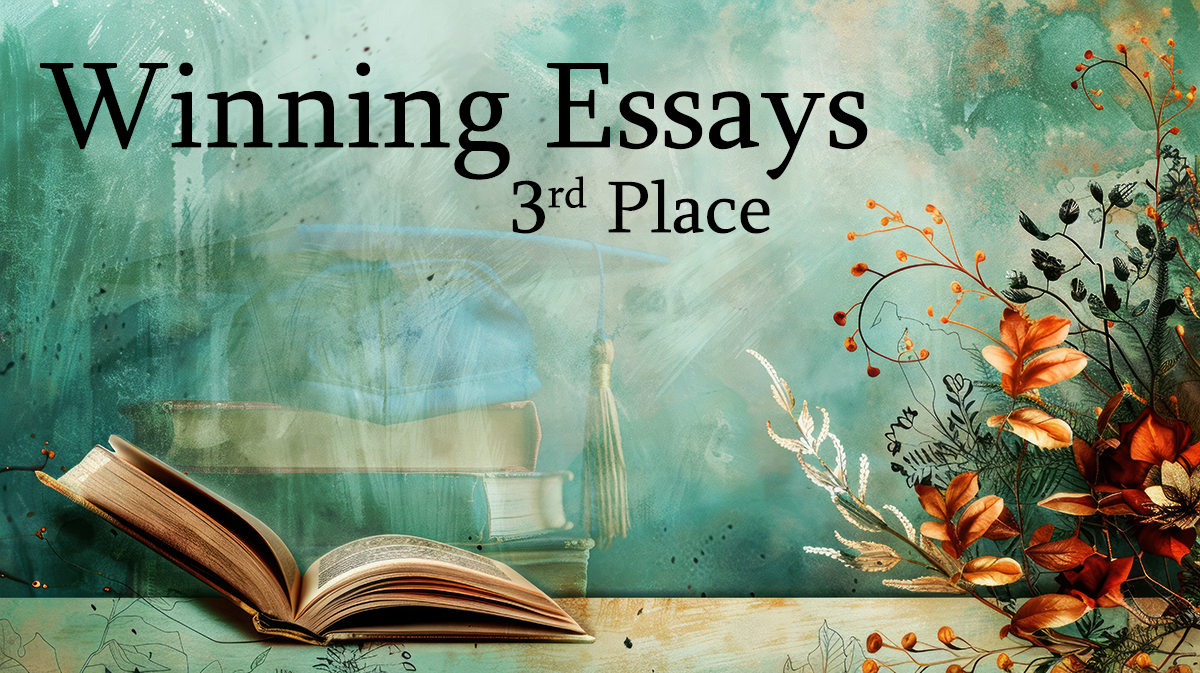A critical reflection of well-intentioned support for Women’s leadership in Defence and national security.
Introduction.
With the abundance of women’s empowerment, ‘Lean-In’ and ‘#metoo’ movements flooding the virtual social world, gender equity and equality across many fields is hotly contested. Yet while public opinion and the conversation continues, gender inequalities remain, including in the National Intelligence Community. In 2019, Lowry reported that significantly fewer women were rising to senior positions in the public sector, with the gender imbalance in the Australian Intelligence Community particularly pronounced.[1] In 2020-21, women occupied 36.84 percent of senior leadership roles in the Australian Signals Directorate (ASD)[2], and 35.71 percent in the Australian Criminal Intelligence Commission (ACIC)[3]. A year on and the reporting period for 2021-22 shows, women occupied only 29.72 percent of senior leadership roles in the ASD,[4] and only 31.25 percent in the ACIC.[5] This significant drop of women in leadership, especially for the ASD, is of great concern. Lack of progress suggests in gaining gender equality in national security leadership is perhaps more complex than previously considered.
The complexity of gender inequality in national security implies a need to revisit past assumptions and analytical approaches. Indeed, a key gap in the literature is the perspectives, understandings and roles of men in achieving gender equality in national security. Research must seek to understand the perspective of men on women’s leadership in the national security sector; and how current policy framing and practical language influences continued inequalities. Greater understanding of complex gender dynamics and realities in the national security sector is achievable by focusing on the interaction between framing for gender equality/women’s leadership, the use of language, and gendered systems at play.
The French philosopher, Michel Foucault, encouraged continual improvement through analysing the underpinning assumptions by considering the unconsidered, with critical reflection as an essential component of this process. Likewise, a similar reflectionist, Ludwig Wittgenstein, recognised how the use of language by different actors produced powerful influence over the construct of meaning and truth.[6] Wittgenstein tried to bring to the world’s attention, the limitations that individuals place upon themselves, in addition to those the world imposes, by thinking in terms of particular social theories or use of language.[7] The two thinkers theories stimulate engaging critical reflection on gender equality and women’s leadership endeavours in Australia’s national security sector. The research of current systemic practices in Australia’s security sector requires a fresh perspective presenting not only a critical reflection, but also an emphasis on providing clarity through methodological rigour.
Current approaches.
It is plausible the misappropriation of language and empowerment approaches slows progress in normalising women in leadership in the National Intelligence Community. Kim, Fitzsimons and Kay[8] studied attribution effects[9] from popular movements such as ‘Lean In’ and like-minded empowerment approaches. Research findings suggest that while such movements as ‘Lean In’ are positively framed and even motivational, concerning unintended consequences of misplaced attribution akin to victim blaming has resulted. This in turn has influenced gender inequality as endemic to a woman’s problem and not that of broader systemic structures.
Acknowledging there may be contextual conceptualisations of empowerment, for the purpose of initial research, empowerment is derived from Rappaport[10] and Rich et al[11], who differentiated between intrapersonal empowerment (self-efficacy, confidence, and competence) from that of formal empowerment (structural or societal) whereby larger political decision-making systems provide for meaningful local control.
Such concepts fail to acknowledge unintended consequences of misplaced attributions for women and stigmatisation measured by masculine social norms for men, reinforcing gender hierarchical gender inequity. Stepping back from such concepts creates room for conceptualising the progression of gender-parity collegiately with men. As such, a reframe of previous efforts may address gender inequality by critically reflecting on the gender and security nexus through the perspective of men. This aims to help identify underlying causalities inherent in social constructs and mindsets that inhibit meaningful change.
The gap in approaches.
Sir Mark Sedwill developed Mission Critical;[12]a report explaining how diversity is a matter of national security and essential to successfully meeting security challenges head on. The report argues to achieve comprehensive understanding of national security threats, diversity of thought from a range of backgrounds and cultures is essential.
A recent Australian study suggests those women who have achieved prominent roles in the security sector are ‘trailblazers’ and not reflective of general gender progress.[13] The study also revealed that ‘significantly fewer women are rising to the senior positions in this sector compared with the Australian Public Service as a whole’; with a particular gender imbalance in Australia’s intelligence community.[14] In addition, as of 30 June 2022, women made up less than 20.1 percent of the permanent Australian Defence Force [15], despite the availability to serve in all areas in 2016; with no women as yet appointed as head of the Department of Defence. In some areas, the number of women in senior executive roles within one intelligence agency declined to zero; with the limited data, available indicating a correlation with the higher the security clearance required the worse the gender balance.[16] Gaps remain in sectors that affect the national security agenda and ultimately the lives it represents. If leadership in national security decision-making bodies are not representative of the people they serve, gaps will endure and negatively affect Australia’s national interest.
Research indicates there may be a disconnect between the understanding of well-meaning notions of ‘empowerment’ and ‘Lean-In’ and their practical effect. Indeed, even three decades ago, Riger asserted, ‘in the context of empowerment, if the focus of enquiry becomes not actual power but rather the sense of empowerment, then the political is made personal and, ironically, the status quo may be supported’.[17] That is, while empowerment may provide an enhanced sense of self-efficacy, it does little more that create an illusion of power with no actual redistribution of power.[18] Moreover, although individual self-efficacy may be ‘empowered’, the conditions and constraints in which individual choices must be made affords little accountability. That is, ‘decisions are made within a social context that is constrained by personal psychology, social ideology, and structural factors’[19]. Arguably, this constraint can be as impacting upon women’s progression to leadership as it is to those men advocating for women. Yet there remains little knowledge of this impact.
The empowerment ideology or ‘Lean In’ advice, when conversely considered, can also reveal negative framings. Firstly, it suggests a neoliberal agenda where women are the cause of their inequality based upon their lack of confidence, assertive engagement, or hard work in progressing their own careers of which, it is their individual responsibility to address. It suggests, women are responsible for the problem (not overcoming their internal barriers) and therefore responsible for the solution (demonstrating self-efficacy). As one study demonstrated, ‘cultural messages apparently aiming to empower women to take charge of their careers may ultimately result in negative attributions about women’s responsibility for gender inequality’[20]. This engenders those women must change rather than the overall system. This indicates there is a necessity to acknowledge and better comprehend nuanced differences between empowerment intent, empowering approaches, and empowered outcomes.[21]
It is important to acknowledge the difference between the ‘problem’ and the ‘problem representation’. The framing of any problem reveals the implicit or explicit problem representations. For example, how we discuss a problem and who is doing the talking, shape the problem construct presenting the path, often singular, to resolving it. The language used to define and determine the problem also presupposes possible solutions. One empirical study within the Australian context examined how the lives of young Australian women have changed by identifying the role of choice and how this may have disguised socially generated inequality. Baker’s study discussed how agendas disguised in women’s rights discourse permitted continuation of the subordination of women ‘covertly within a framework of ostensible commitment to equality, the valorisation of choice and through seductive incitements to individual responsibility’[22]. The use of seductive language and framing, compounded by enticing optimistic movements towards social change, risk applying overly simplistic solutions to complex challenges which enable the continuance of the status quo.
The use of positively framed or sensitive and inclusive language may seem beneficial, but can have further reaching unintended consequences. To illustrate, a recent study[23] suggests replacement language intended to be sensitive to non-binary people has lacked critical deliberation as to their actual overall impact. The study[24] revealed that the seemingly simple replacement of ‘women’ to ‘bodies with vaginas’ or from ‘breastfeeding’ to ‘chestfeeding’ has had deleterious consequences in effective communication of essential information during maternity and birthing practices. The use of language, no matter how well meaning the intent, must be afforded due consideration and critical reflection to ensure ethical applications in practice causes no further harm.
A well-intentioned patriarchal obligation to empower supports attempts to increase women in leadership in Australia’s national security sector. Unfortunately, this has reinforced helplessness and assumes females require assistance to gain agency because they do not have the skills or knowledge to do so themselves. Realising women in leadership roles as a norm in national security sectors means reframing the ‘empowerment’ approach that has been undertaken to date. The production of knowledge, as asserted by Foucault, necessitates greater understanding of the knowledge that drives slow (in)action in this area. Normalising women in leadership in the National Intelligence Community will require a fundamental shift in the way we conceptualise, frame, and implement change. This shift, however, must be evidence-based and reflect the unique characteristics of each situation in order to integrate a tailored, sustainable, ethical solution.
Australian government strategic documents and white papers, supported by intelligence, academic analysis and think tanks,[25] acknowledge the geopolitical environment is evolving and increasingly uncertain.[26] Studies[27] also explain how diversity is a matter of national security and essential to successfully meeting security challenges head on. Yet, Australia has a culture of complacency in creating momentum to increase women in leadership roles in national security. Despite the attention, energy and research dedicated to gender-parity initiatives, the risk of not achieving gender-parity is becoming increasingly detrimental to Australia’s national security. Research must aim to change this. The time for this is now.
Why a new approach.
Often, lived-experience recounts of gender inequality are from the women’s perspective. Women-focussed conferences and events are awash with such narratives. Unfortunately, such conferences and events risk reinforcing gender-parity challenges as women’s issues.[28] Gillard and Okonjo-Iweala argue that while women-focused conferences provided community and support, women-focused events without engaging men little is accomplished.[29] Yet, men willing to attend these women-focused events receive titles such as ‘Manbassadors’ or ‘Male Champions’; a label describing their unique efforts as men advocating for women. The use of language framing men in this way elevates the status of these representatives, risking the reinforcement of the hierarchical gender inequity.[30]
Despite the attention, support, and well-intentioned advocacy approaches, there is still more to understand about the strategy to engage men in diversity and gender-parity initiatives in the national security sector. Gender inequality is a systemic issue but we must acknowledge that this same system also dictates masculinity and how men ought to behave in the national security sector. We cannot begin to understand this complexity if we do not comprehend how men perceive the role of women in leadership in Australia’s national security and their own situatedness in this nexus.
To illustrate, men who advocate for gender-parity are not immune to stigmatisation. In 2010, the Male Champions of Change initiative brought together a range of men in influential leadership roles throughout the private and public sectors committed to elevating women’s representation in leadership roles. While there has been little reporting on this initiative past March 2016,[31] the United Nations has initiated a similar movement, #heforshe, recognising the importance of ‘mobilising all sectors of society in order to achieve the goal of gender equality’.[32] However, studies[33] are beginning to indicate that men who advocate for gender-parity in this way also face potential social and professional consequences for failing to conform to socially constructed masculine norms.[34] More research needs to unpack how men view women in national security leadership roles. Likewise, research needs to enhance understanding of how the framing constructs in which men are situated undermine men’s relevance in advocating current women empowerment attempts. Essentially, not only must social constructs create room for women in leadership as a norm, social constructs must also create room for men to support it.
New approach contribution
Women’s leadership in Australia’s security sector demands greater understanding of the barriers to career progression if timely and significant change is to bring about female leadership as a norm, not an obligation or resulting from individual trailblazers. Inadequate understanding leads to claims and strategies that reinforce women as a minority in need of empowerment, slowing progress through ‘empowerment fatigue’ and misappropriated attribution.
The premise suggest gendered constraints and imbalances persist due to social constructs borne of behavioural interaction, use of language, and the frames that reinforce those constructs. Social performances, interactions, and exchanges can nudge, reinforce, or disrupt constructs. The strength or influence of the actors, language or frames can give meaning and truth to the practices Australian society accepts. Australia must focus on both what men think as well as what Australians actually do. Challenging the cognitive and behavioural underpinnings that lead people to deal with the social world is essential if meaningful change is to be realised.
Challenging the unchallenged will drive debate and stimulate nuanced understanding of the structural boundaries that influence meaningful female participation in Australia’s security-related sectors. The aim is to generate a knowledge transfer towards enhancing acknowledgment of the gap evidenced by gender balance constraint and action towards accepting real change in closing that gap. The results of which will serve Australian national security interests by normalising increased diversity in decision-making bodies and policy-setting activities at all levels, and across all departments in the National Intelligence Community producing successful mitigations and outcomes against national security threats
Conclusion.
Times occasionally punctuated by momentum, the progression towards gender equity and equality in the national security field continues to be elusive. Critical reflection suggests revisiting the conceptual framework upon which approaches to this challenge have tried and somewhat failed to make meaningful and sustainable progress. Australia must find a framework of precisely defined core concepts and research heuristics that can sustain disciplined knowledge accumulation towards achieving meaningful equity of women in Australia's national security sector.
Essentially, Australia must provide an alternate course of action to a strategic framework for national security actors preparing to adapt and deciding to reshape current practices into evidence-based strategies; leveraging the outcomes to capitalise on the ‘smart power’ this insight offers.
Australian Defence Force. (2020). ‘Defence Gender, Peace and Security Mandate: From Rhetoric to Reality’, (Canberra: Department of Defence, 2020).
Australian Government, Australian Criminal Intelligence Commission Annual Report 2021-22.
Australian Government, Australian Signals Directorate Annual Report 2021-22.
Australian Human Rights Commission, 2016, Male Champions of Change - Accelerating the advancement of women in leadership: Listening, Learning, Leading. 1 March 2016 Progress Report.
Bacchi, Carol. (2012). ‘Introducing the ‘What’s the Problem Represented to be?’ approach’, in Bletsas, a. & Beasley, C. (eds) Engaging with Carol Bacchi: Strategic Interventions & Exchanges. Adelaide: University of Adelaide Press.
Baker, Joanne. (2008). ‘The Ideology of Choice. Overstating Progress and Hiding Injustice in the Lives of Young Women: Findings from a Study in North Queensland, Australia’, in Women’s Studies International Forum, 31(1), 53-64.
Baker, Rachael. 2023. ‘Sovereign Capability: Made in Australia or Product of Australia?’, in Australian Journal of Defence and Strategic Studies, vol5 no1.
Borah, Porismita. (2011). ‘Conceptual Issues in Framing Theory: A Systematic Examination of a Decade’s Literature.’ Journal of Communication. 61 (2011): 249.
Cave, Danielle. (2019). ‘Stark Gender Divide Hampers Australian Strategic Policymaking’, in The Strategist, Australian Security Policy Institute. 9 July 2019.
Cave, Danielle and Alex Oliver. (2019). ‘Women Yet to Smash Glass Ceiling in Australian Diplomacy and Security’, in The Interpreter, The Lowy Institute, 09 July 2019.
Cave, Danielle, Alex Oliver, Jenny Hayward-Jones, Kelsey Munro, Erin Harris. (2019). Foreign Territory: women in international relations. Lowry Institute. Report 9 July 2019.
Chong, Dennis and James N. Druckman. 2007 (B). ‘Framing Theory.’ Annual Review of Political Science. 10: 103-126.
Commonwealth of Australia. (2026). 2016 Defence White Paper, Department of Defence.
Commonwealth of Australia. (2020). 2020 Defence Strategic Update, Department of Defence.
Commonwealth of Australia. (2020). 2020 Force Structure Plan, Department of Defence.
Commonwealth of Australia. (2021). Realising the benefit for all – APS Gender Equality Strategy 2021-2026. Australian Government.
Conceição, Pedro, Jon Hall, Yu-Chieh Hsu, Admir Jahic, Milorad Kovacevic, Tanni Mukhopadhyay, Anna Ortubia, Carolina Rivera and Heriberto Tapia. (2020). Tackling Social Norms: A Game Changer for Gender Inequalities. United Nations Development Programme.
Department of Defence Annual Report 2019-20. (2020). Chapter 6 – Strategic Workforce Management - ‘Defence Diversity’. Australian Government. 2020.
Department of Defence Annual Report 2021-22, (2022), Chapter 6 – Strategic Workforce Management -‘Defence Diversity’. Australian Government.
Department of Foreign Affairs and Trade (DFAT). (2016). Gender Equality and Women’s Empowerment Strategy. Australian Government. February 2016.
Dunn, Michelle Elizabeth. (2016). ‘‘You go far but no further’: applying a Gendered Lens to the Women Peace and Security Agenda in Post-Conflict Liberia’, University of Queensland.
Fazio, Teresa. (2019). ‘Writing Women at War: A slate of new releases reexamine gender in conflict’, in Foreign Policy. 13 April 2019.
Freeman, Lyndsay. (2020). ‘Understanding the Women, Peace and Security Agenda’, in The Forge.
Foucault, Michel cited in David Campbell, Writing Security: United States Foreign Policy and the Politics of Identity (Minnesota: University of Minnesota, 2005), 191.
Gillard, Julia and Ngozi Okonjo-Iweala. 2021. Women and Leadership: Real Lives, Real Lessons. Penguin Books, Australia. P.289
Gribble, Karleen D., Melissa C. Bartick, Susan Bewley, Roger Mathisen, Shawn Walker, Jennifer Gamble, Nils J. Bergmann, Arun Gupta1, Jennifer J. Hocking and Hannah G. Dahlen (2022) ‘Effective communication about pregnancy, birth, lactation, breastfeeding and newborn care: the importance of sexed language’, in Frontiers in Global Women's Health: Maternal Health, 07 February 2022.
Grieve, Dominic. (2018). Diversity and Inclusion in the UK Intelligence Community. Intelligence and Security Committee of Parliament. 18 July 2018.
Henfry, Sally-Ann. (2020). ‘Can the APS Maintain Gender Equality Momentum?’, in Broad Agenda, September 01 2020.
Huston, Therese. (2016). How Women Decide: What’s True, What’s Not, and What Strategies Spark the Best Choices. Houghton Mifflin Harcourt.
Irving, Washington. (1819). ‘Rip Van Winkle’, in The Sketch Book of Geoffrey Crayon, C.S. Van Winkle: New York.
Jennings, Peter and Brendan Nicholson, ‘Strategic Update Shows Shift in Australia’s Defence Outlook in Uncertain Times’, in The Strategist, Australian Strategic Policy Institute, 1 July 2020
Johnson, W. Brad and David G. Smith. 2018. ‘How Men Can Become Better Allies to Women’, in Harvard Business Review, October 12, 2018.
Kim, Jae Yun, Grainne M Fitzsimons, Aaron C Kay. (2018). ‘Lean in messages increase attributions of women’s responsibility for gender inequality’, in Journal of Personality and Social Psychology, December 2018.
Klot, Jennifer. (2015). The United Nations Security Council’s agenda on ‘Women, Peace and Security’: bureaucratic pathologies and unrealised potential. PhD thesis, The London School of Economics and Political Science (LSE).
Lowy Institute. (2019). Foreign Territory: Women in International Relations, 09 July 2019. https://www.lowyinstitute.org/publications/gender-australia-ir-sector
Mackie (nee Baker), Rachael. 2016. Feeding the Beast: Challenging the Unchallenged in Australian Mediated Coverage of Publicity-dependent Violent Crime. (Honors Thesis), Murdoch University.
Mackie (nee Baker), Rachael. 2015. Youth Radicalisation – Developing a Counter Narrative through a Marketing Perspective (Honors research paper), Murdoch University.
Newby, Vanessa. (2019). ‘Women face an ‘extra responsibility’ in the armed forces’, in The Strategist, Australian Security Policy Institute. August 28, 2019.
Obama Administration. (2016). Presidential Memorandum - Promoting Diversity and Inclusion in the National Security Workforce. The White House – Office of the Press Secretary. 5 October 2016.
O’Reilly, Marie, Andrea Ó Súilleabháin, and Thania Paffenholz. (2015). Reimagining Peacemaking: Women’s Roles in Peace Processes. International Peace Institute.
Perkins, Douglas D. (2010). ‘Empowerment’, in R.A. Couto (Ed.), Political and Civic Leadership: A Reference Handbook, (Pp. 207-218). Thousand Oaks, Ca: Sage.
Rappaport, J. (1984). ‘Studies in Empowerment: Introduction to the Issue’, Prevention In Human Services, Vol3: pp1-7
Rich, R.C., M. Edelstein, W.K. Hallman, & A.H. Wandersman, (1995), ‘Citizen participation and empowerment: The case of local environmental hazards’, in American Journal of Community Psychology, 23, 657-676.
Riemann, M. (2023). Studying Problematizations: The Value of Carol Bacchi’s ‘What’s the Problem Represented to be?’ (WPR) Methodology for IR. Alternatives, 48(2), 151-169. https://journals.sagepub.com/doi/10.1177/03043754231155763
Riger, Stephanie. (1993). ‘What’s Wrong with Empowerment’, in American Journal of Community Psychology, June 1993 pp279-292
Ritzer, George & Jeffrey Stepnisky. (2013). Sociological Theory (9th Edition), McGraw-Hill Education: New York.
Rose, Sarah. (2019). D-Day Girls: The Spies Who Armed the Resistance, Sabotaged the Nazis, and Helped Win World War II, Crown Publishing Group: Broadway.
Ryan, Mick. (2021). ‘Thinking About Strategic Thinking’, The Vanguard, no.1 (Canberra: Department of Defence, 2021), https://doi.org/51174/VAN.001/ILJO7539
Sedwill, Sir Mark. (2019). Mission Critical, Ministry of Defence, United Kingdom.
Sherf, Elad N., Subrahmaniam Tangirala, Katy Connealy Weber. 2017. ‘It Is Not My Place! Psychological Standing and Men’s Voice and Participation in Gender-Parity Initiatives’, in Organization Science 28(2):193-210.
Stephenson, Elise. (2019). ‘Domestic Challenges and International Leadership: a case study of women in Australian international affairs’, in Australian Journal of International Affairs, Vol 73: no.3, pp 234-253.
Thomson, Jennifer. (2017). The Women Peace and Security Agenda and Post-Conflict Political Institutions: A Feminist Institutional Analysis, De Montfort University.
Turban, Stephen, Dan Wu, and Letian (LT) Zhang. (2019). ‘Research: When Gender Diversity Makes Firms More Productive’, in Harvard Business Review, 11 February 2019.
United NationsSecurity Council. (2000). Resolution 1325. (Women, Peace and Security), S/RES/1325, 31 October 2000. http://undocs.org/en/S/RES/1325(2000)
United Nations Women. 2022. HeForShe Alliance Impact Report.
Whiting, Daniel. (2009). The Later Wittgenstein on Language. Palgrave MacMillan: United Kingdom.
1 Lowy Institute, 2019, Foreign Territory: Women in International Relations, 09 July 2019.
2 Australian Government, Australian Signals Directorate Annual Report 2021-22.
3 Australian Government, Australian Criminal Intelligence Commission Annual Report 2021-22.
4 Australian Government, Australian Signals Directorate Annual Report 2021-22.
5 Australian Government, Australian Criminal Intelligence Commission Annual Report 2021-22.
6 Daniel Whiting, 2009, The Later Wittgenstein on Language. Palgrave MacMillan: United Kingdom.
7 Daniel Whiting, 2009.
8 Jae Yun Kim, Grainne M Fitzsimons, Aaron C Kay, 2018, ‘Lean in messages increase attributions of women’s responsibility for gender inequality’, in Journal of Personality and Social Psychology, December 2018.
9 Attribution effects infer the causes of events or behaviours influences future behaviours. To illustrate, a successful outcome is due to hard work and perseverance so one must continue to work hard in order to continue to be successful.
10 J. Rappaport, 1984, ‘Studies in Empowerment: Introduction to the Issue’, Prevention in Human Services, Vol3: pp1-7.
11 R.C. Rich, M. Edelstein, W.K. Hallman, & A.H. Wandersman, 1995, ‘Citizen participation and empowerment: The case of local environmental hazards’, in American Journal of Community Psychology, 23, 657-676.
12 Sir Mark Sedwill, 2019, Mission Critical, Ministry of Defence, United Kingdom.
13 Danielle Cave and Alex Oliver. (2019). ‘Women Yet to Smash Glass Ceiling in Australian Diplomacy and Security’, in The Interpreter, The Lowy Institute, 09 July 2019.
14 Danielle Cave and Alex Oliver. (2019). ‘Women Yet to Smash Glass Ceiling in Australian Diplomacy and Security’.
15 Department of Defence Annual Report 2021-22, 2022, Chapter 6 – Strategic Workforce Management -‘Defence Diversity’. Australian Government.
16 Danielle Cave and Alex Oliver. (2019). ‘Women Yet to Smash Glass Ceiling in Australian Diplomacy and Security’, in The Interpreter, The Lowy Institute, 09 July 2019.
17 Stephanie Riger, 1993, ‘What’s Wrong with Empowerment’, in American Journal of Community Psychology, June 1993. pp279 292.
18 Stephanie Riger, 1993.
19 Joanne Baker, 2008, ‘The ideology of choice. Overstating progress and hiding injustice in the lives of young women: Findings from a study in North Queensland, Australia’, in Women's Studies International Forum, 31(1), 53-64.
20 Jae Yun Kim, Grainne M Fitzsimons, Aaron C Kay, 2018, ‘Lean in messages increase attributions of women’s responsibility for gender inequality’, in Journal of Personality and Social Psychology, December 2018.
21 Douglas D Perkins and Marc A Zimmerman, 1995, ‘Empowerment Theory, Research, and Application’, in American Journal of Community Psychology, Vol 23, No5, 1995.
22 Joanne Baker, 2008, ‘The ideology of choice. Overstating progress and hiding injustice in the lives of
young women: Findings from a study in North Queensland, Australia’, in Women's Studies
International Forum, 31(1), 53-64.
23 Karleen D. Gribble, Melissa C. Bartick, Susan Bewley, Roger Mathisen, Shawn Walker, Jennifer Gamble, Nils J. Bergmann, Arun Gupta1, Jennifer J. Hocking and Hannah G. Dahlen (2022) ‘Effective communication about pregnancy, birth, lactation, breastfeeding and newborn care: the importance of sexed language’, in Frontiers in Global Women's Health: Maternal Health
24 Karleen D. Gribble, Melissa C. Bartick, Susan Bewley, Roger Mathisen, Shawn Walker, Jennifer Gamble, Nils J. Bergmann, Arun Gupta1, Jennifer J. Hocking and Hannah G. Dahlen, 2022, ‘Effective communication about pregnancy, birth, lactation, breastfeeding and newborn care: the importance of sexed language’, in Frontiers in Global Women's Health: Maternal Health, 07 February 2022.
25 Peter Jennings and Brendan Nicholson, ‘Strategic Update Shows Shift in Australia’s Defence Outlook in Uncertain Times’, in The Strategist, Australian Strategic Policy Institute, 1 July 2020.
26 Commonwealth of Australia, 2016 Defence White Paper, Department of Defence; Commonwealth of Australia, 2020 Defence Strategic Update, Department of Defence; Commonwealth of Australia, 2020 Force Structure Plan, Department of Defence.
27 Sir Mark Sedwill, 2019, Mission Critical, Ministry of Defence, United Kingdom.
28 W. Brad Johnson and David G. Smith. 2018. ‘How Men Can Become Better Allies to Women’, in Harvard Business Review, October 12, 2018.
29 Julia Gillard and Ngozi Okonjo-Iweala. 2021. Women and Leadership: Real Lives, Real Lessons. Penguin Books, Australia. P.289
30 W. Brad Johnson and David G. Smith. 2018. ‘How Men Can Become Better Allies to Women’, in Harvard Business Review, October 12, 2018.
31 Australian Human Rights Commission, 2016, Male Champions of Change - Accelerating the advancement of women in leadership: Listening, Learning, Leading. 1 March 2016 Progress Report.
32 United Nations Women. 2022. HeForShe Alliance Impact Report.
33 Elad N. Sherf, Subrahmaniam Tangirala, Katy Connealy Weber. 2017. ‘It Is Not My Place! Psychological Standing and Men’s Voice and Participation in Gender-Parity Initiatives’, in Organization Science 28(2):193-210.
34 W. Brad Johnson and David G. Smith. 2018. ‘How Men Can Become Better Allies to Women’, in Harvard Business Review, October 12, 2018.









Comments
Start the conversation by sharing your thoughts! Please login to comment. If you don't yet have an account registration is quick and easy.